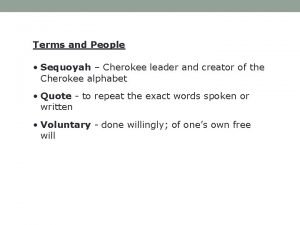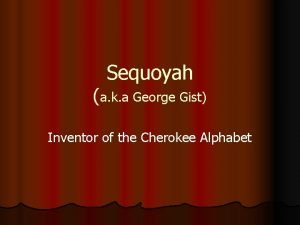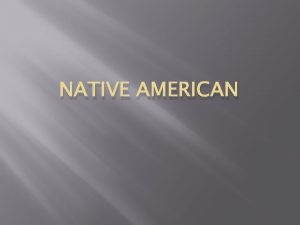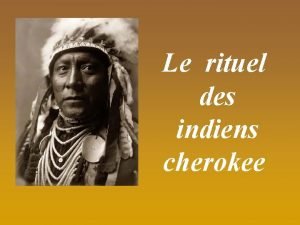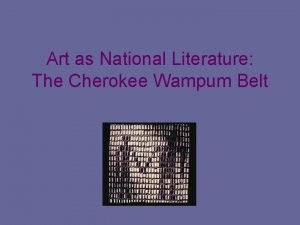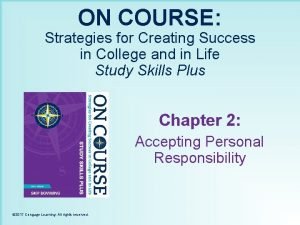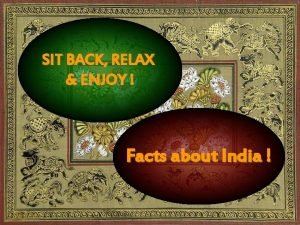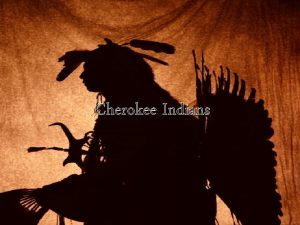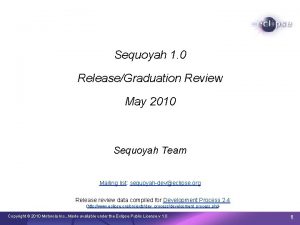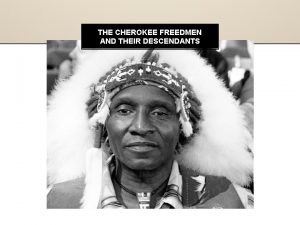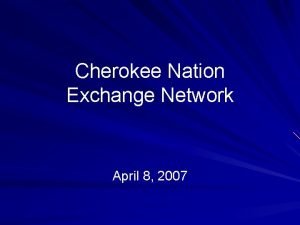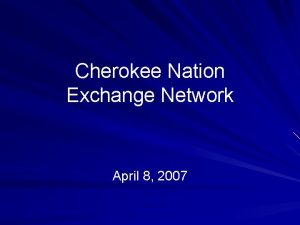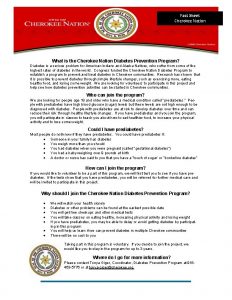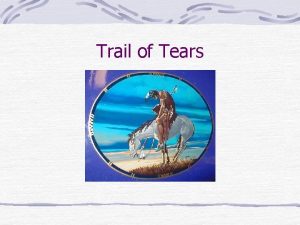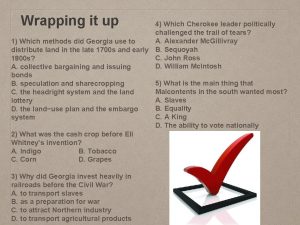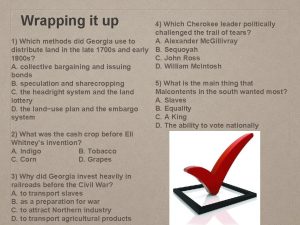Terms and People Sequoyah Cherokee leader and creator
























- Slides: 24

Terms and People • Sequoyah – Cherokee leader and creator of the Cherokee alphabet • Quote - to repeat the exact words spoken or written • Voluntary - done willingly; of one’s own free will

INDIAN REMOVAL

Objectives • Describe the culture of Native Americans in the Southeast. • Describe the conflict over land occupied by Native Americans in the Southeast. • Discuss the forced removal of Native Americans.

Why did Jackson use force to remove Indians from the Southeast? Starting with President Jefferson, there were attempts to move Native Americans westward. Jefferson hoped Native Americans would move voluntarily.

After the War of 1812, Native Americans in the “old” Northwest gave up their lands and moved west of the Mississippi River. However, the Native Americans living in the Southeast refused to move.

Map of Native Americans tribes in the Southeast prior to their removal.

To government leaders, the tribes of the Southeast stood in the way of westward expansion. Tribes American settlement Fertile farmland By the 1820 s, many southerners were demanding that the government move the tribes by force.

The pressure on Native Americans grew. 1825 President Monroe created a plan to move all Native Americans west, but it failed. 1827 The state of Georgia forced the Creeks to give up most of their land. 1828 Georgia tried to force the Cherokees to give up their lands.

Georgia’s actions were challenged in two Supreme Court cases. Cherokee Nation v. Georgia The Supreme Court ruled that it had no authority because the Cherokees are a nation dependent on the U. S. government. Worcester v. Georgia The Court changed course, ruling that the states had no power to remove the Cherokees because they are part of an independent nation.

In Worcester v. Georgia, Chief Justice John Marshall quoted treaties signed by the United States. The treaties granted territory to the Native Americans. Marshall said that Georgia did not have the right to revoke treaties made between two sovereign nations. Treaties between the Georgia’s United laws States and the Native Americans

President Jackson opposed the Supreme Court ruling in Worcester v. Georgia. In 1830, Jackson put a new federal law into effect. Indian Removal Act The act gave Native Americans land in the West in exchange for their lands in the East.

When Andrew Jackson became President in 1829, more than 100, 000 Native Americans lived east of the Mississippi River. Chickasaw Choctaw Creek Seminole Cherokee

The Seminoles were a mix of Florida Native Americans, Creeks, and escaped African American slaves.

The Cherokees had a distinct culture of their own. They also adopted some customs of American settlers. They ran businesses, such as lumber mills. They had a written language, developed by Sequoyah. Some learned to speak, read, and write English. Many had converted to Christianity. In 1827, they formed a constitutional government. They claimed status as a separate nation.

Sequoyah was seen as an important leader for the Cherokee tribe during this time period.

Bell Work – 3 -5 -19 - The Cherokee’s are considered to be one of the Five Civilized Tribes. List one thing that made them “civilized”. Did being “civilized” matter to white settlers?

Jackson’s Indian Removal Act was enforced in the 1830 s. 1830 The Choctaws signed a treaty giving up their land. Like most Native Americans, they thought they had no other choice. 1831– 1833 1838

1830 1831– 1833 The Choctaws moved west. They suffered greatly on their journey. The federal government failed to provide enough supplies, such as tents and food. 1838

1830 1831– 1833 The Cherokees remained on their land until after Jackson left office in 1837. 1838 President Van Buren forced the Cherokees to leave their lands.

The Cherokees’ 1, 000 -mile forced journey to Indian Territory is known as the Trail of Tears. More than 4, 000 Cherokees died because of the relocation, due to the harsh weather, disease, and lack of supplies.

The Shadow of the Owl by John Guthrie, a Cherokee Indian, showed how difficult the journey on the Trail of Tears was.

One group of Native Americans, the Seminoles, refused to leave their land. 1830 1835– 1842 The Seminoles fought three wars against removal. Although they never signed a peace treaty, most Seminoles were forced to move in the 1840 s. 1842

In total, some 100, 000 Native Americans were driven from their homes and forced to walk to a new home. In Indian Territory, Native Americans struggled to rebuild their lives in very difficult conditions.

Quiz 1. Cherokee leader who created a written language 2. to repeat the exact words spoken or written 3. done willingly; of one’s own free will a. b. c. d. e. quote describe Cherokee Sequoyah voluntary 4. The Native Americans that had adopted more white customs than any other group were the (Cherokees/Shawnees). 5. The plan to move Native Americans west of the Mississippi originated with (Thomas Jefferson/Andrew Jackson). 6. The Cherokees brought their fight to the Supreme Court with Cherokee Nation v. (Florida/Georgia). 7. The law President Andrew Jackson used to get around the Court’s decision was the (Monroe Doctrine/Indian Removal Act of 1830). 8. The removal of the Cherokees was actually carried out during the term of President (Andrew Jackson/Martin Van Buren). 9. Why did Andrew Jackson use force to remove Native Americans from the Southeast?
 Worcester v georgia
Worcester v georgia George gist
George gist Transformational vs transformative leadership
Transformational vs transformative leadership Ecunnaunuxulgee
Ecunnaunuxulgee Indien cherokee islam
Indien cherokee islam Cherokee territory before removal
Cherokee territory before removal Cherokee county ga electronics recycling
Cherokee county ga electronics recycling Hogan's fountain cherokee park
Hogan's fountain cherokee park Cherokee
Cherokee Cyb christmas tournament
Cyb christmas tournament 59 grind cherokee iowa
59 grind cherokee iowa Cherokee wedding prayer
Cherokee wedding prayer Cherokee dugout canoe
Cherokee dugout canoe Islam croissant de lune
Islam croissant de lune Polynomial degrees and terms
Polynomial degrees and terms Combining like terms practice
Combining like terms practice Victim vs creator language
Victim vs creator language Creator and destroyer
Creator and destroyer Creator of heaven and earth
Creator of heaven and earth Man the destroyer of environment
Man the destroyer of environment Media and information literacy venn diagram
Media and information literacy venn diagram Veni creator modlitba
Veni creator modlitba I spy walter wick
I spy walter wick Urban realms model example
Urban realms model example Cloze generator
Cloze generator
